10.5 Part Writing, Seventh Chords: Theory exercises
In addition to Workbook Chapters 10.5.1, 10.5.2, 10.5.3, 10.5.4, and 10.5.5, see the examples below.
Example 1
In the first example, we will be connecting V7 and i.
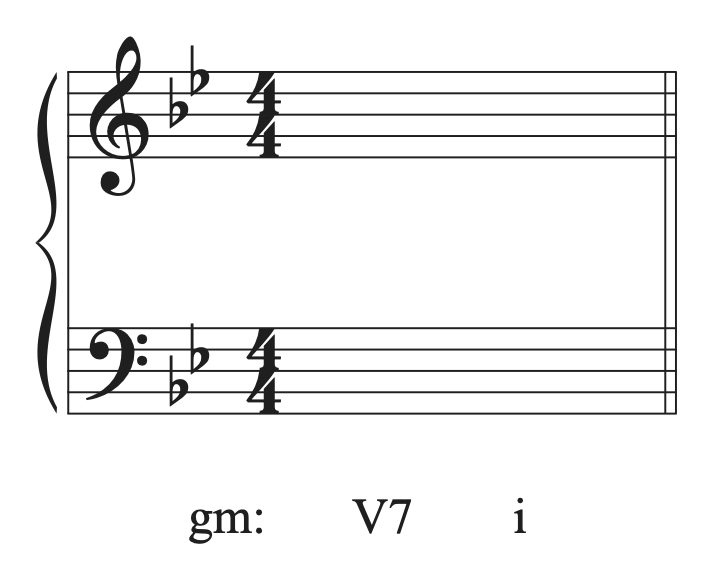
First, build the V7 chord. You can choose to use a complete V7 chord or an incomplete V7 chord (omitting the 5th, scale degree 2). In this example we will use a complete V7 chord. If we were connecting from another chord before the V7, we would place the chordal seventh (scale degree 4) in the voice that would move by common tone or stepwise motion from the chord before it. Dominant function seventh chords use specific scale degree motions to connect between the seventh chord and its resolution, so it is helpful to write in the scale degrees on the V7 chord to help facilitate the correct scale degree motion in each voice.
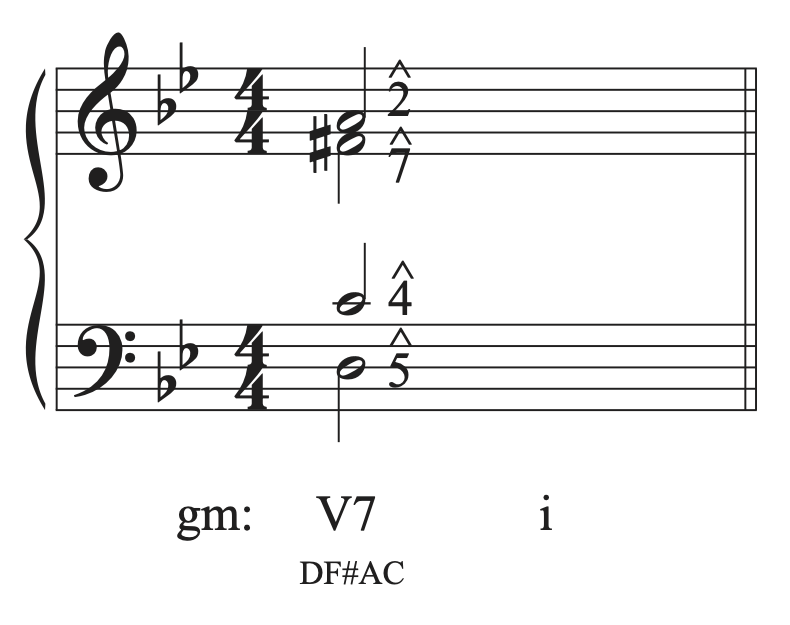
Simply move each scale degree to its correct location to resolve the V7 chord. Scale degree 5 goes to 1, 7 goes to 1, 2 goes to 1, and 4 goes to 3.
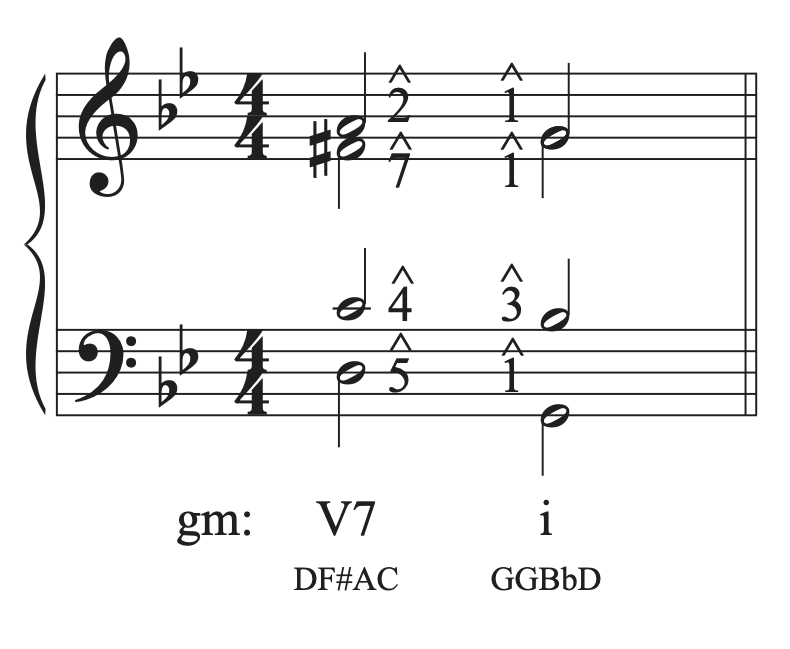
Notice that this solution creates an incomplete i chord. It is missing the 5th of the chord. In order to have a complete V7 chord and a complete I chord, the leading tone must resolve down to scale degree 5, but this can only be done if the leading tone is in an inner voice.
Example 2
Next, let’s look at a leading tone seventh chord. In the example below, we will build a vii˚6/5 chord and resolve it to i.
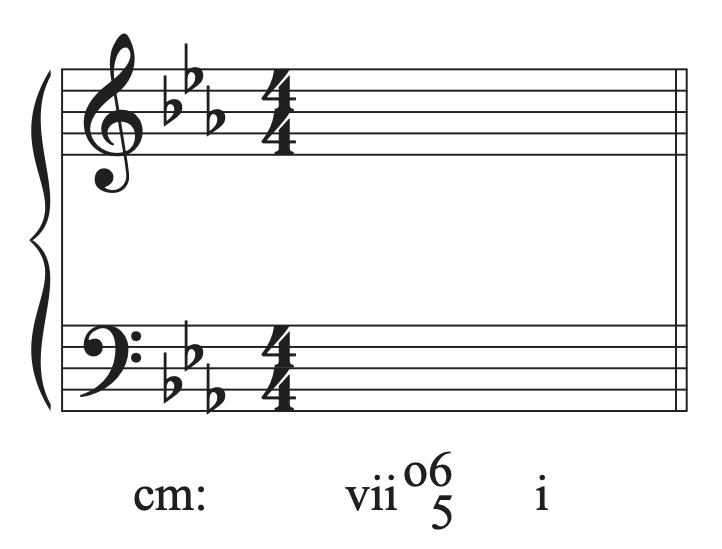
First, we will build the vii˚7 chord and put it in first inversion. This chord should be complete. Like the V7 chord, leading tone seventh chords use specific scale degree motions to resolve, so write in the scale degrees.
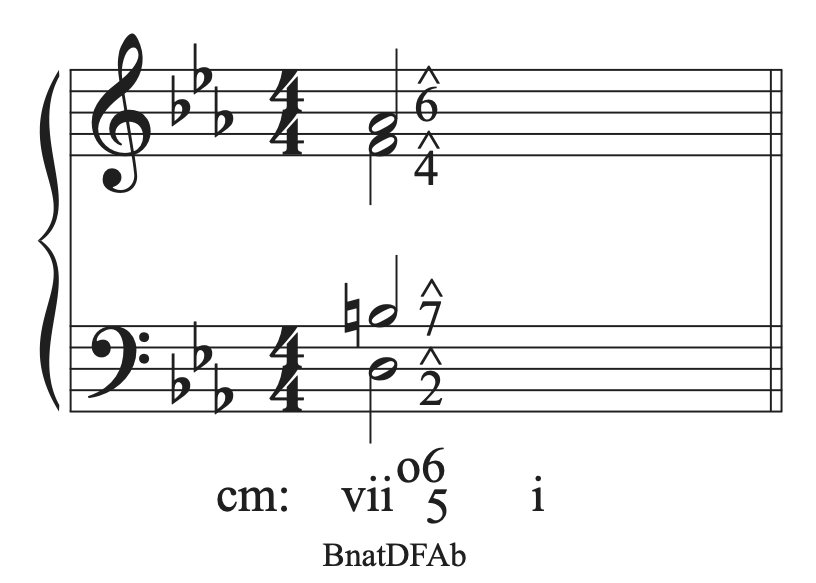
Resolve this chord according to the normal scale degree resolutions: scale degree 7 goes to 1, 2 goes to 1, 4 goes to 3, and 6 goes to 5. Errors are common in vii˚7 chords due to the two tritone intervals. Always check a vii˚7 chord for errors. We can see that resolving according to normal scale degree motion has produced parallel 5ths between the bass and soprano voices.
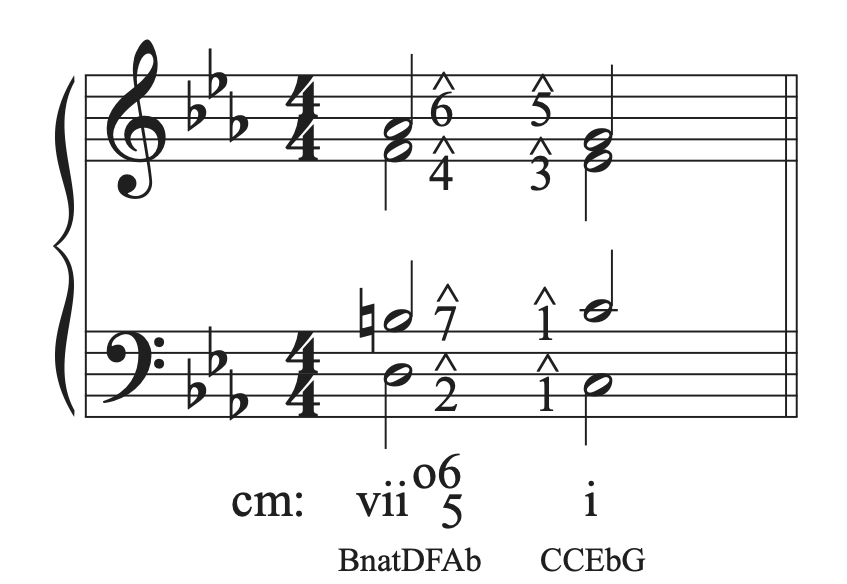
To eliminate parallels, scale degree 2 can move to scale degree 3 instead of to scale degree 1. That would change the inversion of the chord to a i6 chord, and would eliminate any part writing errors.
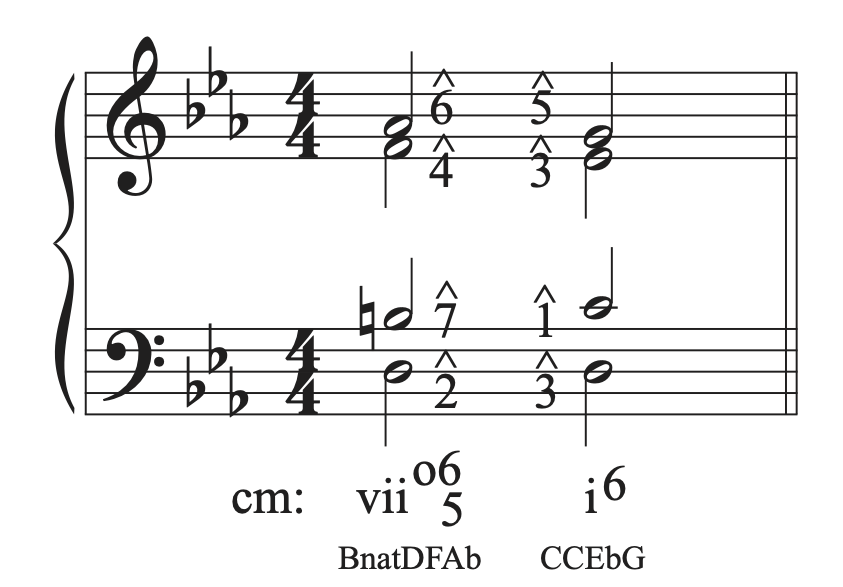
Example 3
Let’s also look at an example of part writing a non-dominant seventh chord.
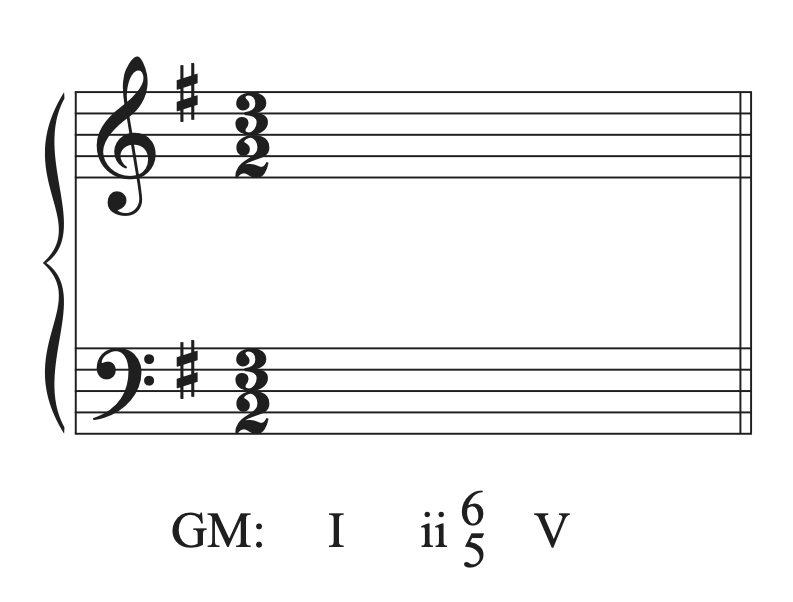
First let’s part write I6-ii6/5. The chordal 7th in the ii6/5 chord, G, needs to be approached by common tone or stepwise motion from the I6 chord. It will come from the G in the I6 chord as a common tone. The bass pitch of the ii6/5 chord must be C. That leaves and E and an A left to part write in the ii6/5 chord. In the I6 chord, the tenor voice is the doubled voice. It could be B, or it could be G. Both would move smoothly by step to the A in the ii6/5 chord. Let’s choose B to create contrary motion with the bass.
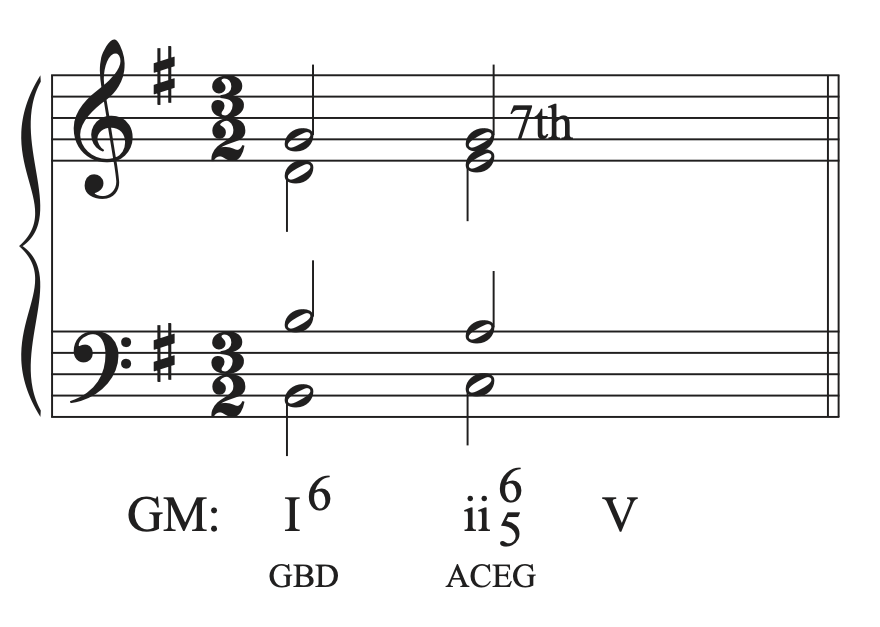
Next, we need to resolve the ii6/5 chord to V. Unlike dominant function seventh chords, non-dominant seventh chords do not use strict scale degree motion to resolve. We need to make sure to resolve the chordal seventh down by step, and all other voices should move by common tone or as stepwise as possible. Make sure to check for errors.


